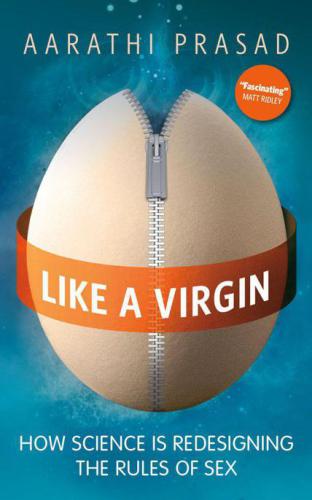
Like a Virgin
How Science is Redesigning the Rules of Sex
- اطلاعات
- نقد و بررسی
- دیدگاه کاربران
نقد و بررسی

July 2, 2012
Sex—how quaint, and increasingly needless, biologist and geneticist Prasad finds in this radical history of baby making. Shucking the “myths and assumptions... stained by the politics of gender,” the London-based Prasad’s debut explores virgin births—reproduction without sex—in the natural world, finding a steadily growing list that now includes insects, vertebrates, fish, and at least one mammal. The remarkable advances in science, going beyond in vitro fertilization, suggest a looming ethical nightmare as well as a dream come true for millions of infertile couples, she argues. Research is being done on artificial wombs and artificial sperm, the use of stem cells for reproduction, and “genetic tinkering” that led to the 2004 birth in Japan of a mouse named Kaguya, the first animal in history to be born to two mothers. Though this mighty mouse’s birth could very well herald a world without men, solo parenting, Prasad coolly preaches, “would be the great biological and social equalizer, a truly new way of thinking about sex.” Her elegantly written romp through the science and history of conception is conceivably as much fun as you’ll ever have thinking about sex without working up a sweat. Agent: Peter Tallack, the Science Factory.

July 15, 2012
An intriguing look at our reproductive future. Previously a researcher in cancer genetics at Imperial College London, Prasad switched careers to become a science writer and is frequently seen on British TV. The author suggests that with the rise of male and female infertility, the use of artificial methods to promote human reproduction will not only be possible, but necessary if the world population declines precipitously. Today, many women postpone childbirth until their mid-30s, when they are less fertile. Prasad also explains that the number of genes in the male Y chromosome has markedly decreased over the span of the human species (from 1,400 to 45 genes). While the female X chromosome is one of a pair (allowing an exchange of genetic material), the Y chromosome is a stand-alone without that possibility. As a consequence--and because sperm are created in abundance--they are more vulnerable to mutation. This may have negative consequences, but in the author's view, sperm mutations have also furthered evolution through natural selection. In the future, she writes, genetic engineering may allow both men and women to produce viable embryos from their own genome. Fetuses might then be provided with an artificial placenta and placed in an artificial womb. While these new advances are still not fully viable and, as the author notes, may raise ethical questions and promote moral dilemmas, there can be immediate benefits from this research--e.g., providing a more nurturing environment for premature babies than the incubators currently in use and allowing women with a damaged uterus or nonfunctional ovaries to give birth. A fascinating examination of a future that may not be too distant, as well as an account of historical misconceptions about conception.
COPYRIGHT(2012) Kirkus Reviews, ALL RIGHTS RESERVED.

November 1, 2012
Biologist and freelance science writer Prasad considers how traditional gender roles might change if virgin birth becomes a real possibility. Scientific advances, particularly in the 1970s and 1980s, introduced new reproductive options such as in vitro fertilization and other forms of assisted reproductive technology along with novel ethical dilemmas. Today, scientists are working on artificial wombs, ovarian transplants, and ways of creating new life without requiring both a male and a female parent. Prasad considers how these innovative technologies may provide even greater opportunities and ethical challenges for infertile individuals--to the point that traditional sex and gender roles could become obsolete. Many books have been written about in vitro fertilization, but here Prasad takes the discussion to new ethical areas. VERDICT This book does an excellent job of making the genetic and scientific jargon understandable to lay readers. Although its lack of footnotes may impact scholarly use, readers who enjoy keeping up with the latest medical trends will find the author's work intriguing.--Tina Neville, Univ. of South Florida, St. Petersburg Lib.
Copyright 2012 Library Journal, LLC Used with permission.




دیدگاه کاربران